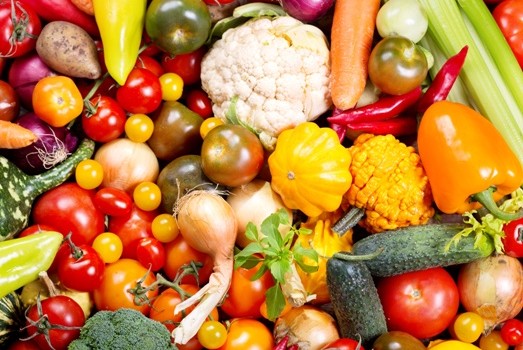
Podcast: Play in new window | Download
In this podcast I’ll be exploring Carbohydrates:
- I’ll talk about the many different types of carbs
- I’ll explain which carbs are essential for health and which carbs can contribute to disease
- I’ll talk about how to find your sugar and starch tolerance level
- Finally I’ll share the best ways to get more healthy natural whole real carbs into your diet
CLICK HERE TO LEARN WHAT ARE THE BEST FOODS TO GET YOU LEAN
Carbohydrates are one of the three main macronutrients besides fat and protein. The most popular carb of them all is sugar. This pure white highly processed refined powder has been the cause and reason for many people failing to reach their body composition and health goals.
Sugar’s sweetness and ability to affect your hormones, your immune system, and your neurology should not be underestimated, and I’ll talk more about this later on. But there’s more to carbs than just this simple sugar.
Carbs in the modern age need to be differentiated into two groups: cellular carbs and acellular carbs.
Cellular carbs are minimally processed whole vegetables, fruits, stems, leaves, and seeds of plants. Cellular carbs are made up of living cells with more nutrients, structural fibre, and a lower density and percentage of actual sugar content per cell. These carbs get digested by your body and your gut microbiota without issue (remember your gut microbiome is the ecosystem of trillions of microorganisms living in your colon).
Acellular carbs are highly processed and refined sugars, flours, and includes the starch stored in whole grains. Acellular carbs are made up of dead cells with hardly any nutrients, non-functional fibre, and a much higher density and percentage of actual sugar concentration per cell. The digestion of acellular carbs creates an immediate excess level of sugar in your blood as well as an imbalance of your gut microbiome due to the fact that these naked sugars without the nutrition and without the fibre are rapidly digested and encourage the overgrowth of Candida and other pathogens.
All carbs are made up of single or groups of molecules called saccharides or sugars.
Monosaccharides consist of just one sugar molecule such as glucose, fructose, and galactose.
Disaccharides are made up of two sugar molecules. Examples include sucrose (your regular table sugar), lactose (milk sugar), and maltose (which is two molecules of glucose).
Carbs that are made up of 2-10 saccharide molecules are called oligosaccharides and any carb over 10 sugar molecules long is called a polysaccharide.
Now mono- and disaccharides can be considered simple sugars and oligo- and polysaccharides could be called complex sugars.
Starch is a storage form of carbs. Starch is a polysaccharide made up of hundreds to thousands of saccharide molecules, specifically chains of glucose.
Dietary fibre is also a carb. Fibre from foods are non-glucose oligo- and polysaccharides meaning that while your digestive system will breakdown and assimilate sugars and starch into glucose it will not breakdown and assimilate fibre.
Fibres can either be insoluble meaning it doesn’t dissolve in water or soluble where it does dissolve in water.
Insoluble fibre passes right through your entire digestive system from mouth hole to south hole and is not digested by your body and is also not digested or eaten as food by your gut flora.
Certain soluble fibres are digested and eaten by your gut flora. These fibres that feed your gut flora are known as prebiotics and they feed both the good bugs (probiotics) and the bad bugs (pathogens).
Another type of carb that acts as a prebiotic is called resistant starch. It is a polysaccharide made up of glucose molecules, but unlike regular starch which is digested by your body resistant starch acts like a prebiotic fibre where it is resistant to human digestion and so becomes food for your gut microbiome.
So there’s a lot of different carbohydrates some of which your body can digest, some of which your gut flora can digest, and some neither your body nor your gut flora can breakdown.
So which carbs are essential for health and which carbs aren’t?
If there was ever an essential carb it would be dietary fibre, especially prebiotics. Whole real vegetables and fruits will provide you with plenty of prebiotic, soluble, insoluble, and resistant starch fibres.
Insoluble fibre has the benefit of taking out toxins, cholesterol, and metabolised hormones ready for elimination in your colon, but insoluble fibre also has a dark side as it can cause damage to your gastrointestinal tract if eaten in excessive amounts or if eaten out of balance with soluble fibre. Think of insoluble fibre as steel wool rubbing up against your single-celled very thin gut wall.
Soluble fibre on the other hand can not only act as a prebiotic feeding your gut flora, but also provides a soft sponge bath for your gut wall. Aloe vera and chia seeds are high in viscous mucous gelatinous polysaccharides that can give your gut wall a soothing massage and are a lot better for your gut than insoluble fibres especially if you’re dealing with gut issues like constipation.
Beta-glucans are a type of polysaccharide and fibre found in certain mushrooms and seaweeds that supports immune function and has been shown to boost the immune system helping cancer patients overcome their cancer. I believe beta-glucans are essential to a long and happy life.
Are sugars and starches essential for health?
In general I would say no, but it really does depend on your ability to tolerate sugar and starch which I will talk about soon.
Whatever your sugar and starch requirements are keep in mind that carb quality matters when talking about simple sugars and complex starches.
If you’re getting sugar and starch from cellular carb sources like whole real vegetables and fruits then your chances of developing a chronic disease, gaining fat, and upsetting your gut flora will be very low compared to someone else who gets their sugar and starch from acellular carbs like highly processed and refined flours and sugars from baked goods, sports drinks, and table sugar.
When you eat acellular carbs these get taken up into your bloodstream quite quickly causing a massive spike in blood glucose levels followed by a massive surge and release of the hormone insulin. Insulin’s job is to remove glucose from the blood. When glucose is left in the blood for too long it will cause damage to your cells, body tissue, and your immune system. So insulin puts glucose into your muscle, liver, and fat cells for use or storage. When insulin is active your body turns from fat-burning mode into fat-storing mode. If you become insulin-resistant like a type-2 diabetic where your cells no longer respond to insulin then glucose will be left in the blood for far too long causing long-term damage to nervous tissue and other bodily tissues and your immune system will be unable to function properly leading to premature aging and cancer.
Basically a high fibre diet with more prebiotic soluble fibres made up of cellular carbs from real food sources is a lot healthier for you than a low fibre diet or a diet high in insoluble fibre that’s rich in acellular carbs. Sugars and starches are not essential for health, but may be needed depending on your individual needs and lifestyles.
You may have heard of low carb diets, high carb diets, slow carb diets, and even controlled carb diets. How do you know which diet is right for you? Find your personal tolerance to sugars and starches, that’s how.
You have a unique requirement for sugar and starch different to anyone else and this is called your carb tolerance. Since there are many different carbs I like to be more specific and call it your sugar and starch tolerance. Your tolerance to sugars and starches is based on you being able to eat a certain amount without increasing your waistline or increasing your fasting blood glucose levels, and by not having a decrease in performance in the gym, in the boardroom, or in the bedroom.
So how do you find out how much sugars and starches you should be eating?
One way is to look at your ancestral background. Cultures that live on or near the Earth’s equator have a higher tolerance to sugar and starch due to the high availability and cooling nature of fruits and some tubers. Cultures that live closer to the Earth’s poles have a lower tolerance to sugar and starch due to the lack of vegetation and therefore they have evolved to eat more animal foods higher in fat and protein as these have a more warming effect on the body.
Of course today most people (me included) are fruit salads made up of many different ethnic backgrounds so it’s impossible to take this information as fact, but instead use it as a guide and it’s good to have this knowledge in the back of your mind as you work through the next practical step.
To find your tolerable level of sugar and starch intake you will start eating a ketogenic diet meaning very low carb with very high fat and then by slowly progressing toward higher levels of sugars and starches and lowering your levels of fat you will find out how much sugar and starch you really need to meet your activity requirements and the unique biochemical needs of your body.
Because you are looking for your own unique tolerance to sugars and starches you will need to subtract the total amount of fibre from the total amount of carbs which will leave you with just the sugar and starch content of that food. This is also known as net carbs.
So for example a cup of cooked broccoli has about 12 g of total carbs and 6 g of fibre and after calculating for net carbs and removing the fibre content the total amount of sugars and starches in a cup of cooked broccoli is 6 g. Okay another example, a medium sized cooked sweet potato (that’s about 200 g worth without the skin) has 36 g of total carbs and 6 g of fibre. Subtract the fibre from the total carb count and you get a net carb sugars and starches content of 30 g.
Remember to focus on eating cellular carbs as much as possible during these diets.
Also stick to the same weekly routine in terms of activity levels whether that be in the gym or at home or at work. The goal here is to find the amount of sugars and starches that you can eat without harm in this current point in time of your life and if you find yourself not being as active or being more active than usual this is going to give you incorrect information affecting your results.
During each of the following four diets keep a journal and note down how you feel, your hunger and energy levels, your mood, your activity levels and performance in the gym, your libido, as well as your bowel movements. You will also want to note down any significant life happenings like a stressful event or celebration. And if you can, get yourself a glucometer or glucose meter which measures your blood glucose levels and measure your fasting blood glucose first thing every morning.
You will use all of this information after trying out each of the four diets to find out what worked, when it worked, what didn’t work, and what may have interfered when something should have worked because it was shown to have worked in the past.
Okay onto the diets.
The first diet you’ll begin with and follow for 2-3 weeks is the very low carb high fat diet aka the ketogenic diet. Total allowable net carbs on this diet will be 30 g a day and they will all come from non-starchy vegetables only. We want to restrict the sugars and starches on this initial diet. For an 80 kg male aiming for a 2000 calorie a day diet this means fat will be between 100-190 g a day and protein will be around 100 g a day. For a 60 kg female eating 1800 calories a day this means fat will be between 130-175 g a day and protein will be around 75 g a day.
So on a VLCHF diet (very low carb high fat diet) you could eat five cups of cooked broccoli and reach 30 g of your maximum allowance of carbs for that day.
After completing 2-3 weeks of the VLCHF diet move on to a low carb high fat diet for 1-2 weeks. This is where daily sugars and starches (net carbs) fall between 30-80 g and starchy vegetables are back on the menu. Again for the 80 kg male fat will now be between 120-165 g a day while protein stays around 100 g a day. For the 60 kg female fat now lies between 110-150 g daily with protein staying at around 75 g a day.
So on a LCHF diet you could eat a medium sweet potato (around 200 g worth) giving you 30 g of sugars and starches for the day.
Next diet to try out for 1-2 weeks is the moderate carb diet. This diet has net carbs between 80-150 g a day. So for the 80 kg male daily fat intake will be between 90-130 g and protein stays at about 100 g. For the 60 kg female daily fat intake becomes 80-120 g and protein sticks to around 75 g a day.
Final diet to test for 1-2 weeks is the high carb low fat diet. The HCLF diet is has net carbs between 150-300 g a day. The 80 kg male will have around 20-70 g of fat a day with protein still around 100 g. The 60 kg female will have about 10-60 g of daily fat with about 75 g of protein.
Remember all these are estimates and are based on your activity levels and whether you’re a pro athlete, a weekend warrior, or a sedentary office worker you will need to tinker with and play around with the protein and fat and net carb ratios.
Once you’ve done this sugar and starch tolerance testing you will once and for all know how much carbs you can handle without increasing your waistline, without feeling moody or hangry, and still being able to perform in the gym, the boardroom, and the bedroom. And remember this is just for where you are right now in your life and as I like to say life is a process never still, but always in flow. In a few years time you may find that this no longer works and you’ll have to figure out your new sugar and starch tolerance levels as well as protein and fat ratios that work for you.
Okay let’s talk about the best food sources for fibre polysaccharides and how to include more real carbs into your diet.
The following are all fantastic sources of prebiotics and resistant starch:
- Jerusalem artichoke
- Onions and garlic and leeks
- Asparagus
- Green bananas
- Beans
- Cooked then cooled potatoes and white rice
Shiitake, reishi, and maitake mushrooms and seaweeds are fantastic sources of beta-glucans. Remember beta-glucans help boost your immune system.
Aloe vera and chia seeds are full of gelatinous polysaccharides. This is great for gut health.
Imagine a meal made up of:
- Potato salad with red onion
- Roasted asparagus and garlic covered with butter
- Stir fried shiitake mushrooms and broccoli seasoned with kelp flakes and chia seeds
- Hummus
- Some reheated white rice
- Baked sweet potato mash with butter, cream, and cinnamon and
- Cauliflower puree with duck fat
In this meal you have altogether soluble, insoluble, prebiotic, and resistant starch fibres as well as a whole lot of phytonutrients, micronutrients, and sulphur with not that high a sugar and starch content and all of them are cellular carbs.
A favourite and simple vegetable dish I like is a starchy vegetable roast including potatoes, kumaras, sweet potatoes, pumpkins, and carrots roasted in extra-virgin olive oil or duck fat. Very delicious and tasty and simple to make.
I also enjoy soups and smoothies that include more raw vegetables and herbs and spices.
If you feel you need to be living a lower carb lifestyle remember that most fruits today are bred for sweetness with higher sugar content so focus on heirloom varieties with more skin, less flesh or with more tart and sour flavours. Fruits with a higher skin to flesh ratio will have more fibre, phytonutrients, and antioxidants and less fruit sugars. So for example smaller berries are more nutrient dense then larger berries and won’t cause as large of a spike in blood sugar and insulin.
Hopefully the next time you hear that a certain carb diet is better than another you’ll think twice and ask yourself, ‘how much essential fibre compared to non-essential sugars and starches are there in this diet and would the net carb ratios work for me and my current lifestyle?’
Don’t guess. Test!
“With any recommendations and advice you hear the only real way to find out if it’s true for you and whether it will work for you is by trying it out for yourself.”
You’ll never know if that jersey or that dress looks good on you until you put it on.
I’ll leave you with this. You cannot treat all carbs the same. Some are more essential then others and some are downright detrimental (acellular carbs). Your individuality means your fibre and sugar needs will vary from moment to moment and will be different to other people.
As with all foods quality matters so make your choice of carbs a quality choice.
Links and Resources
Please leave a 5-star iTunes review for the Whole Guidance Podcast
Podcast: Play in new window | Download
Subscribe: iTunes | Stitcher Radio | Android | RSS
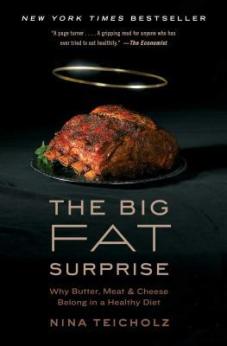
The Big Fat Surprise – Nina Teicholz
(Buy from Amazon; Buy from The Book Depository)
A New York Times bestseller
Named one of The Economist’s Books of the Year 2014
Named one of The Wall Street Journal’s Top Ten Best Nonfiction Books of 2014
Kirkus Reviews Best Nonfiction Books of 2014
Forbes’s Most Memorable Healthcare Book of 2014
Named a Best Food Book of 2014 by Mother Jones
Named one of Library Journal‘s Best Books of 2014
In The Big Fat Surprise, investigative journalist Nina Teicholz reveals the unthinkable: that everything we thought we knew about dietary fat is wrong. She documents how the low-fat nutrition advice of the past sixty years has amounted to a vast uncontrolled experiment on the entire population, with disastrous consequences for our health.
For decades, we have been told that the best possible diet involves cutting back on fat, especially saturated fat, and that if we are not getting healthier or thinner it must be because we are not trying hard enough. But what if the low-fat diet is itself the problem? What if the very foods we’ve been denying ourselves—the creamy cheeses, the sizzling steaks—are themselves the key to reversing the epidemics of obesity, diabetes, and heart disease?
In this captivating, vibrant, and convincing narrative, based on a nine-year-long investigation, Teicholz shows how the misinformation about saturated fats took hold in the scientific community and the public imagination, and how recent findings have overturned these beliefs. She explains why the Mediterranean Diet is not the healthiest, and how we might be replacing trans fats with something even worse. This startling history demonstrates how nutrition science has gotten it so wrong: how overzealous researchers, through a combination of ego, bias, and premature institutional consensus, have allowed dangerous misrepresentations to become dietary dogma.
With eye-opening scientific rigor, The Big Fat Surprise upends the conventional wisdom about all fats with the groundbreaking claim that more, not less, dietary fat—including saturated fat—is what leads to better health and wellness. Science shows that we have been needlessly avoiding meat, cheese, whole milk, and eggs for decades and that we can now, guilt-free, welcome these delicious foods back into our lives.
Disclaimer: This page contains affiliate links that may provide monetary compensation to help support the Whole Guidance Vision of Creating a Happy and Healthy Planet should you make a purchase. We very much appreciate and thank you for your support.
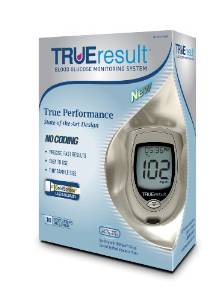
Glucose Meter / Glucometer
(view product page)
Stress is at the root of almost all chronic diseases and the biggest contributor to stress is low-level inflammation within the body. The most common cause of hidden inflammation today is the dysregulation of blood sugar/glucose levels.
There is at most one teaspoon of glucose in the blood of a healthy person. When glucose levels get too high (eg. high consumption of refined/processed sugars) or get too low (eg. from long endurance exercise) the body releases hormones that help balance sugar levels in the blood.
The more times the body is forced to balance blood glucose levels the lees effective it becomes at doing the job. Eventually the body is unable to perform this balancing act 100% of the time and this leads to inflammation, tiredness, illness, disease, and finally death.
If there is one tool that every single person whether they be suffering an illness or not could use to take control of their health it would be a glucometer.
Disclaimer: This page contains affiliate links that may provide monetary compensation to help support the Whole Guidance Vision of Creating a Happy and Healthy Planet should you make a purchase. We very much appreciate and thank you for your support.
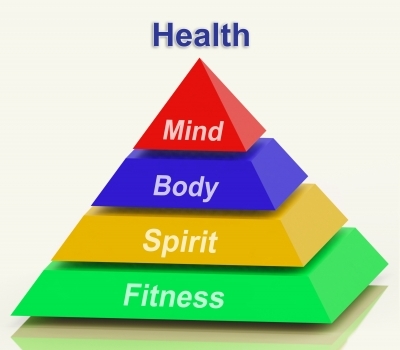
Holistic and Functional Health Practitioners such as myself do not treat symptoms or disease. We treat you, the person.
Symptoms and disease are the last expression of an underlying problem happening in your body.
As health detectives we dig deeper and investigate further to uncover the root cause of dysfunction in your body. Once we find the real issue, the root cause and restore function back to those weakened areas of your body the symptoms and disease will eventually heal.
Besides working with me you can locate other like-minded Holistic and Functional Health Practitioners at the following websites.
Picture: Stuart Miles | freedigitalphotos.net
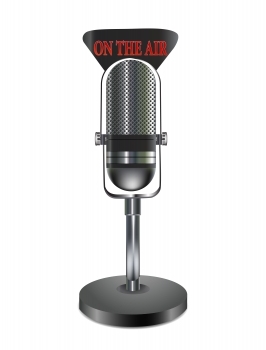
Podcasts are digital audio programmes similar to a radio show.
You can download a majority of podcasts for free to your computer or smart mobile device using applications such as iTunes, Stitcher, and Pocket Casts.
Below you will find a premium selection of wellness podcasts that will assist you in improving many different areas of your life including health, wealth, love, and happiness.
- Wise Traditions – Weston A. Price Foundation, Hilda Labrada Gore (download from iTunes)
- The Model Health Show – Shawn Stevenson (download from iTunes)
- Love-Life – Jane Donovan (download from iTunes)
- Soul Doctor – Rebecca Dettman (download from iTunes)
- The One You Feed – Eric Zimmer (download from iTunes)
- Happier with Gretchen Rubin – Gretchen Rubin and Elizabeth Craft (download from iTunes)
- The Quote of the Day Show – Sean Croxton (download from iTunes)
- Bruce Lee Podcast – Shannon Lee (download from iTunes)
- The Cognitive Rampage – Adam Lowery (download from iTunes)
- Tangentially Speaking – Dr Christopher Ryan (download from iTunes)
- The Tim Ferriss Show – Tim Ferriss (download from iTunes)
- Up For A Chat – Carren Smith, Cyndi O’Meara, Kim Morrison (download from iTunes)
- Balanced Bites – Diane Sanfilippo and Liz Wolfe (download from iTunes)
- Rewild Yourself! Podcast – Daniel Vitalis (download from iTunes)
- Katy Says with Katy Bowman – Katy Bowman (download from iTunes)
- Ben Greenfield Fitness – Ben Greenfield (download from iTunes)
- Fitness Confidential with Vinnie Tortorich – Vinnie Tortorich (download from iTunes)
- The Fat-Burning Man Show – Abel James (download from iTunes)
- Jocko Podcast – Jocko Willink and Echo Charles (download from iTunes)
- The Joe Rogan Experience – Joe Rogan (download from iTunes)
- Bulletproof Radio – Dave Asprey (download from iTunes)
- Revolution Health Radio – Chris Kresser (download from iTunes)
- The Sean Croxton Sessions – Sean Croxton (download from iTunes)
- Body IO FM – John Kiefer and Dr Rocky Patel (download from iTunes)
- Underground Wellness Radio – Sean Croxton (download from iTunes)
Picture: digitalart | freedigitalphotos.net

There are over four billion websites online dedicated to health, dieting, and weight loss.
With mainstream advice not working for a lot of people and the fact that most of it often contradicts itself where does one go for consistent practical wellness information that works for 99% of individuals when applied in the real world?
Below you will find 20 websites that are the pick of the wellness bunch that are backed by human history and factual non-political, non-financed science. These websites also have real world evidence as reported by real people who have healed and cured themselves following the lifestyle recommendations and whole food recipes that are detailed within.
Click through to a better, stronger, healthier, and happier you.
- WestonAPrice.org
- PaulCheksBlog.com
- UndergroundWellness.com
- ChrisKresser.com
- MarksDailyApple.com
- PerfectHealthDiet.com
- Body.io
- FatBurningMan.com
- BenGreenfieldFitness.com
- RobbWolf.com
- BalancedBites.com
- BulletproofExec.com
- GlutenFreeAnna.com
- WellnessMama.com
- NomNomPaleo.com
- CivilizedCavemanCooking.com
- EatDrinkPaleo.com.au
- NourishedKitchen.com
- AgainstAllGrain.com
- ZenbellyCatering.com

Have you ever attended a conference, seminar, or workshop and wished to yourself that you had a video or audio recording? What about having a full transcription of the entire event that you can read at your own leisure?
The online seminar or summit scene is very popular at the moment. You get options for video, audio, and transcripts that you can purchase for lifetime access.
The following health summits are the most cost-effective way to educate and upskill yourself in your own time and improve you and your family’s health and well-being along the way.
- The Gluten Summit – from theDr.com
(visit product page) - Real Food Con – from UndergroundWellness.com
(visit product page) - Detox Summit – from FoodandSpirit.com
(visit product page) - Digestion Sessions – from UndergroundWellness.com
(visit product page) - Thyroid Sessions – from UndergroundWellness.com
(visit product page) - Evolution of Medicine Summit – from FunctionalForum.com
(visit product page) - Paleo Summit – from UndergroundWellness.com
(visit product page)
Picture: Stuart Miles | freedigitalphotos.net
Disclaimer: This page contains affiliate links that may provide monetary compensation to help support the Whole Guidance Vision of Creating a Happy and Healthy Planet should you make a purchase. We very much appreciate and thank you for your support.
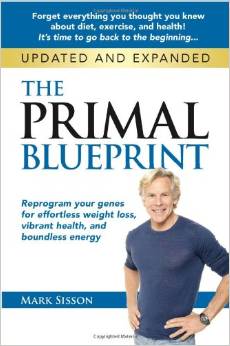
The Primal Blueprint – Mark Sisson
(Buy from Amazon; Buy from The Book Depository)
Being healthy and fit has gone mainstream–millions sweat the calories away on the roads or in health clubs and scrutinize labels and menus trying to do the right thing to control weight, delay aging, and feel healthy, fit, and energetic. And it’s simply not working. Rates of obesity, diabetes, arthritis, heart disease, and cancer continue to climb, and even the most committed fitness enthusiasts often carry 10 or 20 extra pounds of body fat.In this updated and expanded edition of the 2009 hardcover release from Mark Sisson, MarksDailyApple.com publisher and de-facto leader of the burgeoning primal/paleo/evolutionary health movement presents the compelling premise that you can reprogram your genes in the direction of weight loss, health, and longevity by following 10 immutable Primal laws validated by two million years of human evolution. This 2012 paperback release contains extensive, never-before-published bonus material, including an incredible full-color, 16-page insert of seven Primal Blueprint reader success stories and their stunning before/after photos, pictorials, detailed descriptions and workout log pages for the Primal Essential Movements and Primal sprint workouts, hacks for each of the 10 Primal Blueprint lifestyle laws (to promote quick results in body composition, fitness, athletic performance, daily energy levels, and reduce disease risk factors and reliance on medication, solutions to common questions and stumbling blocks)– pulled from Primal Blueprint reader submissions, and commentary on diets and dieting, including compare/contrast of Primal Blueprint with other popular programs.
Disclaimer: This page contains affiliate links that may provide monetary compensation to help support the Whole Guidance Vision of Creating a Happy and Healthy Planet should you make a purchase. We very much appreciate and thank you for your support.
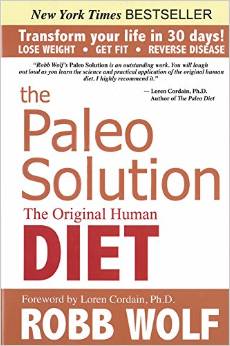
The Paleo Solution – Robb Wolf
(Buy from Amazon; Buy from The Book Depository)
Do you want to lose fat and stay young, all while avoiding cancer, diabetes, heart disease, Parkinson’s, Alzheimer’s and a host of other illnesses? The Paleo Solution incorporates the latest, cutting edge research from genetics, biochemistry and anthropology to help you look, feel and perform your best. Written by Robb Wolf, a research biochemist who traded in his lab coat and pocket protector for a whistle and a stopwatch to become one of the most sought after strength and conditioning coaches in the world. With Robb’s unique perspective as both scientist and coach you will learn how simple nutrition, exercise and lifestyle changes can radically change your appearance and health for the better.
Disclaimer: This page contains affiliate links that may provide monetary compensation to help support the Whole Guidance Vision of Creating a Happy and Healthy Planet should you make a purchase. We very much appreciate and thank you for your support.
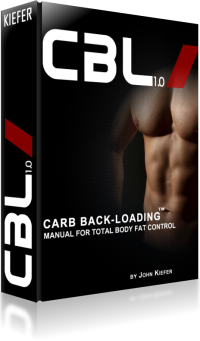
Carb Back-Loading – John Kiefer
(visit product page)
Carb Back-Loading takes advantage of the most advanced and intricate features of human metabolism. To succeed, you must eat the foods you’ve been told to avoid, like pizza, donuts, pastries, ice cream… Carb Back-Loading requires dessert!
But Carb Back-Loading isn’t all about “junk” food. You can eat plenty of the incredible meals you love even if they’re not loaded with sugar and creamy-whipped goodness.
Now, with a world of dinner choices available to you, you don’t have to worry about your diet when going out with friends, snacking with friends at the game, or eating out at a nice restaurant.
No Assembly Required
Most great nutrition research comes with no indication of how to use it. And most programs telling you what to do come with hardly any basis in science. With Carb Back-Loading, you finally have a scientific system that comes completely assembled. You’ll learn HOW it works, but more importantly, you’ll get a full-blown handbook of body recomposition that spells out how you can immediately put it to use.
This 300+ page ebook, backed by over 50 pages of references from widely-distributed scientific journals, is nothing less than a full-blown MANUAL for total body recomposition.
Inside you’ll find:
- Why Carbs are not the Enemy
- How to starve fat cells
- When to eat carbs to target muscle growth
- Precise pre- and post-workout nutrition recommendations
- Quick-guide tables that provide macronutrient breakdowns for your whole day
- How to make Carb Back-Loading work for ANY training time
- Women: Modifications and advice for your specific needs
- Supplement recommendations to super-charge your results
- Which supplements you DON’T NEED to waste money on
- All of the scientific evidence supporting WHY it works, but also…
- The ability to skip the science and go straight to the program.
Disclaimer: This page contains affiliate links that may provide monetary compensation to help support the Whole Guidance Vision of Creating a Happy and Healthy Planet should you make a purchase. We very much appreciate and thank you for your support.
